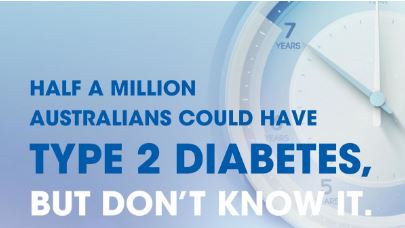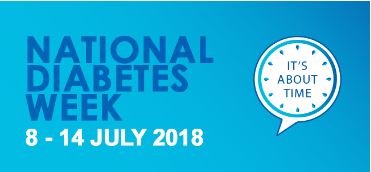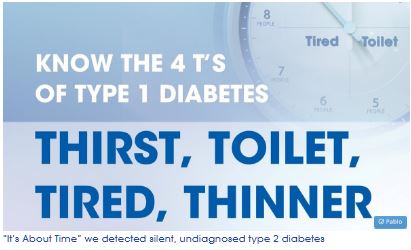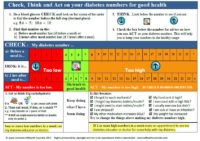Diabetes Awareness Week 2018 has kicked off with the theme ‘It’s About Time’. It got me thinking … what do I think It’s About Time to improve in the lives of people with diabetes?
There’s going to be a lot said this week about it being time to diagnose people with type 1 diabetes early … no more people dying from a missed diagnosis, which is simply unbelievable in a country like Australia.
We’ll all be encouraged to get people with type 2 diabetes diagnosed early,

given many live with diabetes for on average seven years before being diagnosed. All very necessary areas on which to focus attention and Diabetes Australia, I’m sure, will do a mighty job getting these messages out there.
So, what about people who already have type 1 or type 2 diabetes? Diabetes
Awareness Week is that week of the year when lots of images are aired during the news and other current affairs programs depicting people with diabetes as being blurry with fat wobbly bottoms, walking down the local mall. The message that type 1 and type 2 diabetes are entirely different conditions is likely to generally escape the journalists yet again. (And it’s not for the want of trying by Diabetes Australia to embed this understanding in the mind and writings of journalists across the country!)
What’s my It’s About Time for all of the Credentialled Diabetes Educators/Diabetes Educators (CDE/DEs) and health professionals out there involved with grassroots diabetes care in primary and acute care ?
“It’s about time … more people with diabetes were assisted to reach their glucose targets.”
I know … you’re thinking … Really? Isn’t that a no-brainer?
Well … no more than the fact our health workforce should be trained well enough to identify the common symptoms (Thirst, Tired, Toilet, Thin) of undiagnosed type 1 diabetes before they die with ketoacidosis due to their health professionals missing the classic symptoms (which does happen each year in Australia).
About fifty percent of Australians with diabetes have their glucose levels sitting outside of their target range. Amazing isn’t it … and let’s not blame it on so-called ‘non-compliance’ by people with diabetes. The most likely non-compliance is by the health professionals who haven’t kept their knowledge of contemporary diabetes care up-to-date to ably help people with diabetes to get to target.
Some years ago I helped put together one of the popular insulin company self titration guides. It focussed me on designing something similar (left) to help people to understand what their blood glucose levels mean. I wanted to help people to understand how, and were empowered to check their blood glucose levels, think about the number and act on it if we were to get more people achieving their target glucose levels.
Since using the resource in my own clinical practice I have been amazed at how much times it saves me teaching what is a complex task. It has also made a big difference helping people with diabetes to:
- Understand what their target levels are before and 2 hours after meals
- Look at their levels without emotion – same way I do as a CDE
- Feel empowered to act on levels when low or high
- Go back to their health professional/s when outside of their target earlier.
- Relax about the variation in levels that occurs due to the +/- 15% acceptable range set by the ISO standard for these devices.
Everyone receives this handout during our sessions and it helps facilitate a person centred approach to supporting diabetes self management because the targets can be individualised. It is an education resource, handout and ready reckoner for action, which many people tell me they keep on their fridge for ready access.
The Check, Think and Act is now available for health professionals to purchase and use in their own work with people with diabetes, and includes a downloaded copy of the resource, instructions on how to use it and limited copyright agreement for you to use it with people with diabetes you support.
Only $31.90 and a tax deduction! Click here to find out more or purchase.





